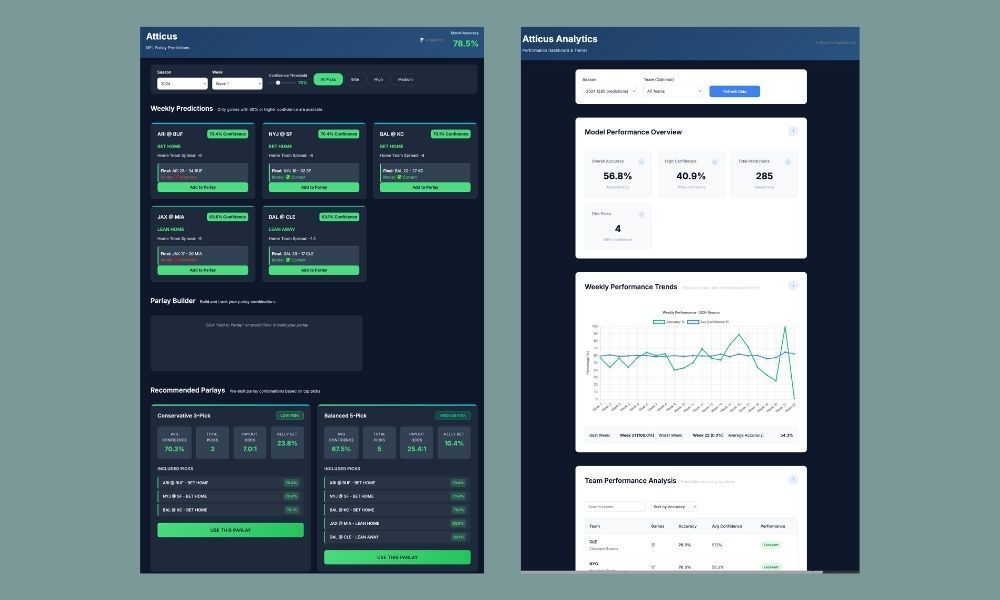Strategic How-To: Evolving from Multi-Channel to Omni-Channel
A CMO-Level Guide to Migrating from Channel-Based Marketing to a Unified Omni-Channel Approach
Three months into my role as Executive Director at Novartis, I faced a daunting reality: our marketing efforts spanned 90 countries with over 1,200 websites, each operating as isolated islands. Email campaigns ran independently from social media efforts. Search campaigns pointed to landing pages that had no connection to our CRM data. We had multi-channel marketing, but we definitely didn't have omni-channel customer experiences.
The wake-up call came during a quarterly review when our CEO asked a simple question: "Why did our highest-converting social media campaign result in our lowest email engagement rates?" We couldn't answer because we had no unified view of how customers moved between channels.
That question sparked a transformation that ultimately reduced our operating costs by 52% while dramatically improving customer engagement. More importantly, it taught me that the difference between multi-channel and omni-channel isn't about technology—it's about measurement strategy.

The Multi-Channel Measurement Trap
Most marketing leaders make the same mistake I did initially: they measure channels in isolation. Email gets measured by open rates and click-through rates. Social media gets measured by engagement and reach. Search gets measured by cost-per-click and conversion rates.
This approach creates what I call "measurement silos"—impressive-looking dashboards that hide the truth about customer behavior. When channels operate independently, you optimize for channel performance rather than customer outcomes.
The result? You end up with high-performing channels that cannibalize each other, frustrated customers who receive conflicting messages, and marketing spend that works against itself.
The Strategic Framework for Omni-Channel Measurement
After consolidating marketing operations across three Fortune 500 companies, I've developed a four-pillar framework that transforms multi-channel efforts into genuine omni-channel experiences.
Pillar 1: Unified Customer Identity Architecture
Before you can measure omni-channel effectiveness, you need to know who your customers are across every touchpoint. This means creating a single customer identity that persists whether someone visits your website, opens an email, or engages on social media.
At Novartis, we implemented a customer data platform that connected previously isolated databases. The technical implementation took six months, but the strategic planning took longer. We had to answer fundamental questions: What constitutes a unique customer? How do we handle anonymous visitors? What data points create the most accurate customer profiles?
Key Actions
- Audit existing customer data sources and identify overlap
- Establish data governance policies that prioritize customer privacy
- Implement customer matching algorithms that connect touchpoints
- Create standardized customer attributes across all channels
The payoff was immediate. Within 90 days, we could track individual customer journeys across channels, revealing that our highest-value customers interacted with an average of 4.7 touchpoints before converting.
Pillar 2: Journey-Based Attribution Modeling
Traditional attribution models assign credit to first-click, last-click, or distribute it evenly across touchpoints. These approaches miss the sequential nature of customer decision-making and the varying influence of different channels at different stages.
Journey-based attribution recognizes that a customer who discovers your brand through social media, researches on your website, and converts through email represents a fundamentally different journey than someone who searches for your product directly.
At Formative, I implemented a weighted attribution model that assigned different values based on journey stage and customer intent. Social media discovery got weighted differently than search-driven research, which got weighted differently than email-driven conversion.
Key Actions
- Map customer journeys from awareness to advocacy
- Assign attribution weights based on journey stage and channel influence
- Implement journey analytics that track progression, not just conversion
- Create feedback loops that adjust attribution based on actual customer behavior
This approach revealed that our content marketing efforts were driving 34% more qualified leads than traditional last-click attribution suggested, leading to a budget reallocation that improved overall campaign ROI by 28%.
Pillar 3: Cross-Channel Experience Optimization
Omni-channel marketing means customers experience your brand consistently regardless of how they interact with you. This requires measuring experience quality across channels and optimizing for journey continuity rather than channel performance.
The metric that matters most isn't channel conversion rates—it's journey completion rates. A customer who moves seamlessly from social media discovery to email nurturing to website conversion represents a successful omni-channel experience, even if individual channel metrics appear average.
Key Actions
- Measure message consistency across touchpoints
- Track experience quality at journey transition points
- Optimize for journey flow rather than channel-specific metrics
- Implement cross-channel personalization based on previous interactions
At Bottom Line Strategy Group, we discovered that customers who experienced consistent messaging across three or more channels had 67% higher lifetime value than those who interacted through isolated channels.
Pillar 4: Predictive Journey Analytics
The most sophisticated omni-channel organizations don't just measure what happened—they predict what will happen next. Predictive analytics allows you to intervene in customer journeys proactively rather than reactively.
This means identifying customers who are likely to churn based on their cross-channel behavior patterns, predicting which channels will be most effective for specific customer segments, and optimizing journey paths before customers complete them.
Key Actions
- Implement machine learning models that predict customer behavior
- Create early warning systems for journey abandonment
- Develop dynamic journey optimization based on predictive insights
- Test journey variations continuously to improve prediction accuracy
At Razorfish, predictive journey analytics helped us achieve a 3.5X ROI improvement by identifying high-value prospects early in their journey and customizing their subsequent touchpoints.

Implementation Roadmap: From Strategy to Execution
Transforming from multi-channel to omni-channel measurement requires a phased approach that balances ambition with practical constraints.
Phase 1: Foundation (Months 1-3)
- Audit existing data sources and measurement capabilities
- Establish unified customer identity across primary channels
- Implement basic cross-channel journey tracking
- Create baseline metrics for journey performance
Phase 2: Integration (Months 4-6)
- Deploy advanced attribution modeling
- Implement cross-channel experience optimization
- Establish journey-based performance benchmarks
- Train teams on new measurement approaches
Phase 3: Optimization (Months 7-12)
- Launch predictive analytics capabilities
- Implement dynamic journey optimization
- Establish continuous testing protocols
- Scale successful approaches across all channels
Measuring Success: The Metrics That Matter
Traditional marketing metrics focus on channel efficiency. Omni-channel metrics focus on customer effectiveness. The difference is profound.
- Journey Completion Rate: Percentage of customers who progress from initial touchpoint to desired outcome
- Cross-Channel Engagement Score: Measure of message consistency and experience quality across touchpoints
- Journey Velocity: Time required for customers to move from awareness to conversion
- Channel Synergy Index: Measure of how channels work together rather than compete
At every company where I've implemented this framework, these metrics revealed opportunities that channel-specific measurements missed entirely.
Common Pitfalls and How to Avoid Them
Technology Before Strategy: Don't start with platforms and tools. Start with customer journey understanding and measurement objectives.
- Perfection Paralysis: You don't need perfect data to begin. Start with the best data available and improve over time.
- Channel Team Resistance: Changing from channel-specific to journey-based metrics threatens existing team structures. Address this through training and incentive alignment.
- Short-Term Thinking: Omni-channel transformation requires patience. Journey optimization often reduces short-term channel performance while improving long-term customer outcomes.
The Competitive Advantage
Companies that master omni-channel measurement don't just improve marketing efficiency—they create sustainable competitive advantages. When you understand customer journeys better than competitors, you can anticipate needs, reduce friction, and deliver experiences that build lasting relationships.
More importantly, omni-channel measurement capabilities become the foundation for advanced marketing automation, personalization at scale, and predictive customer experience optimization.
The question isn't whether to evolve from multi-channel to omni-channel marketing. The question is whether you'll lead this transformation or react to competitors who do.
Key Takeaways
- Unified customer identity enables journey-based measurement that reveals hidden opportunities
- Journey-based attribution provides more accurate investment guidance than traditional channel metrics
- Cross-channel experience optimization focuses on customer outcomes rather than channel performance
- Predictive analytics transforms marketing from reactive to proactive customer relationship management
What to Do Next: Audit your current measurement capabilities against the four-pillar framework. Identify the biggest gap between your multi-channel metrics and omni-channel customer understanding. Start there.
How long does it take to see ROI from omni-channel measurement implementation?
Most organizations see initial insights within 90 days of implementing unified customer identity and basic journey tracking. However, significant ROI typically emerges in months 6-9 when cross-channel optimization and predictive analytics become operational. The key is starting with pilot programs that demonstrate value before scaling across all channels.
What's the most common mistake companies make when transitioning to omni-channel measurement?
The biggest mistake is treating omni-channel as a technology implementation rather than a strategic transformation. Companies often purchase customer data platforms or marketing automation tools expecting immediate omni-channel capabilities. Success requires aligning organizational structure, measurement frameworks, and team incentives around customer journeys rather than channel performance.
How do we balance customer privacy concerns with the data requirements for omni-channel measurement?
Privacy-first omni-channel measurement is not only possible but increasingly necessary. Focus on first-party data collection, implement clear consent management, and design measurement frameworks that provide customer value in exchange for data sharing. The most successful implementations I've seen treat privacy as a competitive advantage rather than a constraint, building customer trust that enables deeper engagement across channels.
Author: William Flaiz










